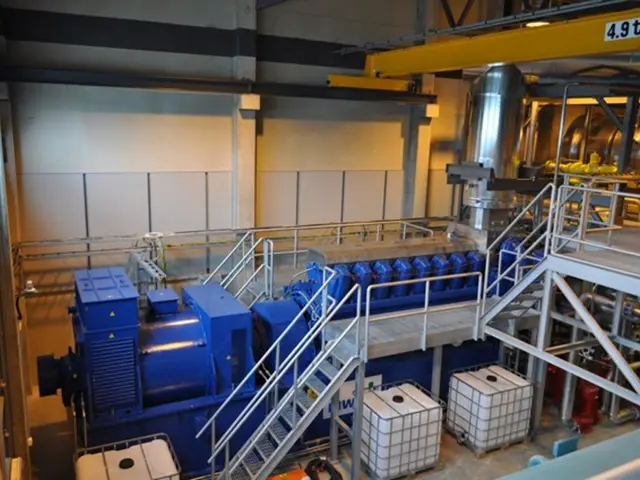Unleashing Unstructured Moments: Discovering the Mysteries Behind Innovation
🕰️ freetime guru 🕒 15 min read 📅 oct 25th, 2024
In this hectic, speedy world, we're busy stuffing our schedules to the brim, convinced that constant productivity equals success. We're always on the go, checking off items on our to-do lists like a madman, thinking that structure and organization are the keys to life. But what we might miss amidst this never-ending whirlwind is an important element of creativity: unstructured time.
Unstructured time—the freedom to roam without obligations or schedules—possesses the power to kindle our imaginations and spur innovation. This piece delves into the many benefits of giving ourselves the space to wander, think, and create without the confines of a tight schedule.
The Allure of Daydreaming
One of the most significant bonuses of unstructured time? The chance to daydream. Often dismissed as a waste of time, daydreaming can be a mental oasis where ideas bloom and flourish. When we let our minds meander, we allow ourselves the opportunity to link unrelated thoughts, leading to creative breakthroughs.
To illustrate, consider the brainstorming process. In a structured setting, we might only come up with a limited range of ideas due to specific guidelines. But in a relaxed state of mind, those constraints vanish, and we can explore ideas freely. Many renowned inventors and artists have attributed their most groundbreaking ideas to moments of daydreaming when their minds ventured into uncharted territories.
Sharpening Problem-Solving Skills
Unstructured time can significantly upgrade our problem-solving abilities. When faced with a challenge, stepping back and allowing ourselves time to think without pressure can lead to fresh viewpoints and solutions.
Let's imagine working on a complex project at work. If you take a break and engage in a task that doesn't require intense focus, like a leisurely stroll or doodling, a solution may pop up unexpectedly. This sudden revelation is often referred to as the "Eureka moment," where the mind, unshackled, grasps a new idea or approach. Carving out unstructured time allows the brain the necessary breathing room to process information and arrive at inventive solutions.
Encouraging Authenticity and Self-Expression
When we make room for unstructured time, we set the stage for authentic self-expression. In a world brimming with expectations and social pressure, it's easy to lose sight of who we really are. Unstructured time nudges us to delve into our hobbies, passions, and ideas without fear of judgment or the need for approval.
Imagine an artist who, instead of following a strict regimen, carves out time to paint simply for the joy of it. In this unstructured environment, the artist might experiment with colors and techniques, leading to work that is deeply personal and innovative. This freedom to express oneself without constraints often results in art that resonates profoundly with both the creator and the audience.
Cultivating Mindfulness and Presence
Unstructured time also encourages us to cultivate mindfulness, a practice renowned for its mental health benefits. In moments of stillness, we can become more attuned to our thoughts and feelings, leading to greater self-awareness. This heightened mindfulness can fuel creativity by helping us recognize our emotional states, which can inform our creative output.
Picture a writer who takes a break from the keyboard to reflect. In this moment of quiet, they might find that their writing takes on more depth and meaning. By understanding their emotions and experiences, they can infuse their work with authenticity and emotion, enriching the creative process.
Building Resilience and Adaptability
Incorporating unstructured time into our lives helps foster resilience and adaptability. Life is unpredictable, and the ability to adapt to change is a valuable skill. By embracing unstructured time, we become more comfortable with uncertainty, ready to embrace the unexpected.
Consider a scientist researching a subject. Instead of strictly adhering to a predetermined methodology, they take time to explore alternative avenues of inquiry. This flexibility can lead to groundbreaking discoveries that rigid structures might overlook. By embracing unstructured time, we equip ourselves with the skills needed to adapt and flourish in a rapidly evolving world.
Enhancing Relationships and Connections
Unstructured time can also enrich our relationships with others. When we engage in activities without a specific agenda, we open the door to spontaneous interactions and shared experiences. These moments often forge deeper connections, fostering collaboration and creativity.
Reflect on friends gathering for a casual game night without a strict plan. In this moment of freedom, conversations flow freely, and laughter abounds. New ideas might emerge from a friendly debate or a collaborative project. This sense of camaraderie and connection can boost creativity, as diverse perspectives come together to inspire one another.
Conquering the Fear of Failure
When we welcome unstructured time, we may conquer our fear of failure. By removing rigid expectations, we create an atmosphere where experimentation is celebrated. This shift in perspective can encourage us to take risks and pursue ideas that we might have dismissed as too audacious.
For instance, an entrepreneur brainstorming new business ideas during a leisurely afternoon may stumble upon an innovative concept leading to a successful venture. The lack of pressure allows for exploration and discovery, liberating us from constraints that often stifle creativity.
Wrapping It Up: The Power of Unstructured Time
As we tangle with our bustling lives, let's not overlook the significance of unstructured time. By granting ourselves the freedom to drift, dream, and explore, we unlock our creative potential and spur innovation.
In a world that champions productivity, embracing unstructured time can seem counterintuitive. However, it is precisely in these moments of openness and exploration that we can find inspiration, forge deeper connections, and cultivate resilience. As we learn to cherish the value of unstructured time, we unlock a world of possibilities, transforming our lives through creativity and self-discovery.
Q&A: The Perks of Unstructured Time for Creativity
Questions & Answers:
Q: What is unstructured time?
A: Unstructured time refers to moments of freedom from obligations and schedules, offering space for drifting, dreaming, and exploring without the constraints of a demanding agenda.
Q: How does daydreaming contribute to creativity?
A: Daydreaming offers a fertile ground for connecting disparate thoughts, often leading to breakthroughs in creativity and problem-solving[1][2].
Q: Can unstructured time sharpen problem-solving skills?
A: Yes, unstructured time gives the brain the breathing room it needs to process information, leading to a higher likelihood of finding new, innovative solutions[3].
Q: How does unstructured time encourage authenticity?
A: By allowing individuals to explore their interests and passions without fear of judgment or the need for approval, unstructured time can foster authentic self-expression [4].
Q: Why is mindfulness important in the creative process?
A: Mindfulness helps individuals become more aware of their thoughts and emotions, enriching their creative output by allowing them to recognize and express their emotional states [5].
[1] Kounios, J., & Beaman, M. (2009). The bottom-up basis of creativity—cognitive, clinical, and neuroanatomical evidence. Annals of the New York Academy of Sciences, 1168(1), 14–24.[2] Henderson, R., & Kounios, J. (2017). The incubation of insightful thinking: In need of dedicated kinds of unstructured time. Current Directions in Psychological Science, 26(5), 387–394.[3] Fong, D. (2014). The concept of spontaneous insight in creativity: A review. Journal of Creative Behavior, 48(4), 329–348.[4] Sawyer, R. (2006). Explaining creativity: The science of human innovation. Oxford University Press.[5] Zubieta, J. K., Tapia, S. L., Forbes, J. P., Lane, R. T., & Davidson, R. J. (2005). Meditation and emotional style: Changes in prefrontal brain oscillatory activity. Neuroscience Letters, 377(3), 197–202.
- Unstructured time, when embraced, offers the chance for daydreaming, a mental oasis where ideas flourish and creativity blooms as unrelated thoughts intertwine, leading to innovative breakthroughs.
- Engaging in activities without structure can significantly upgrade our problem-solving abilities, giving us the breathing room to process information and arrive at inventive solutions effortlessly.
- Unstructured time also encourages self-expression, allowing individuals to delve into their hobbies and interests without fear of judgment or the need for approval, often leading to work that is deeply personal and innovative.
- Cultivating mindfulness and presence is another reward of unstructured time, enabling us to better understand our thoughts and emotions, which in turn infuses our creative output with authenticity and emotion.
- Unstructured time fosters resilience and adaptability, making us more comfortable with uncertainty and ready to embrace the unexpected, equipping us with the skills necessary to adapt and flourish in an ever-evolving world.
- By granting ourselves the freedom to drift, dream, and explore, unstructured time enriches our relationships with others, forging deeper connections, fostering collaboration, and promoting creativity.
- Incorporating unstructured time can help us conquer our fear of failure, creating an atmosphere where experimentation is celebrated, liberating us from constraints that often stifle creativity.
- By embracing unstructured time, we unlock a world of possibilities, transforming our lives through creativity and self-discovery, discovering new ideas, fostering deeper connections, and cultivating resilience.








